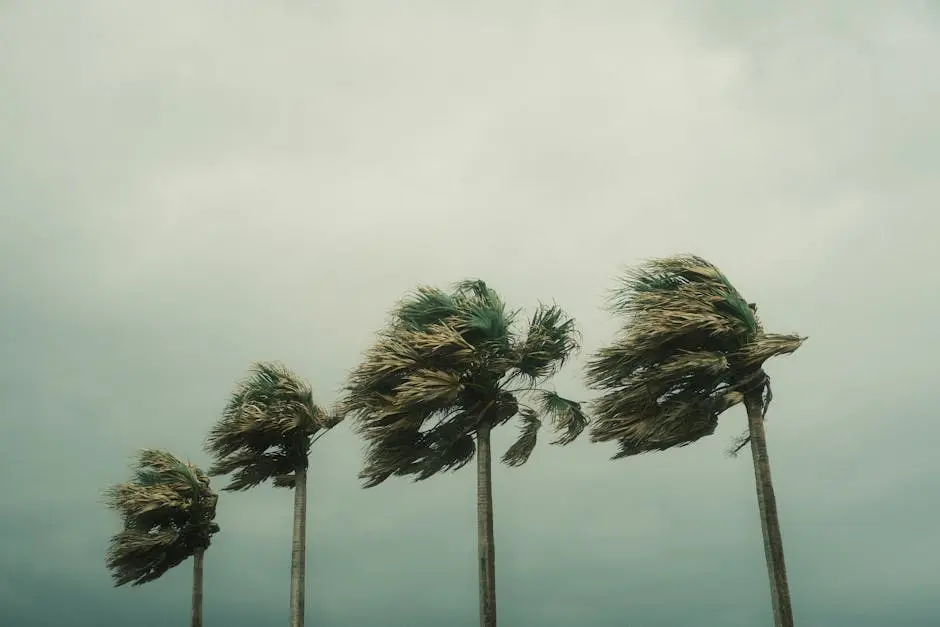Protecting Your Home: Why Tropical Storm Warnings Matter
Tropical storms can cause a whirlwind of trouble, but understanding how to prepare for them shouldn’t be daunting. Let’s explore why these warnings are crucial and how they can help you safeguard your haven.
Understanding Tropical Storm Warnings
Before diving into protection strategies, it’s essential to grasp what tropical storm warnings entail. These alerts, issued by meteorologists, indicate that tropical storm conditions are expected within a specific timeframe. Think of these warnings as a roadmap to readiness; they guide you on how to manage the impending conditions, potentially saving not just your property but lives. It’s not just the storm itself that poses a threat; the aftermath can be just as daunting. From uprooted trees to power failures, understanding the gravity of these warnings is the first line of defense.
Recognizing the significance of storm systems and their pathways can empower individuals and communities. Weather services use a combination of models and data to provide accurate warnings. This foresight allows for efficient resource mobilization and personal preparation. Understanding that a tropical storm warning means conditions are expected within 36 hours helps prioritize tasks, ensuring every critical detail is addressed. With this comprehension, you can formulate an actionable plan and minimize damage when the storm finally hits.
The Importance of Heeding Warnings
Ignoring these warnings can lead to severe consequences. Understanding the potential impacts, from flooding to power outages, emphasizes the need to take them seriously. Storms can escalate rapidly, moving from a mild tropical disturbance to a full-blown hurricane in a matter of hours. This unpredictability is precisely why heeding warnings is paramount. Consider the devastation caused by historic storms; many lives and properties were lost due to delayed reactions or underestimating the storm’s power. It’s not just about staying indoors; it’s about actively engaging in precautionary measures that could prove life-saving.
Beyond the immediate physical dangers, there’s an economic ripple effect tied to ignoring storm warnings. Businesses face disruption, affecting local economies for extended periods post-storm. According to economic impact studies, the cost of recovery often surpasses the cost of precautionary measures. Engaging with these warnings means preventing such economic strain and preserving community resilience. An informed citizen becomes a safeguarded one, contributing to a collective network of storm preparedness.
Preparing Your Home for a Tropical Storm
Preparation is your best defense. Simple steps like securing outdoor furniture, checking window seals, and having an emergency kit ready can make a significant difference. Start by examining your home’s vulnerabilities. Are there overhanging branches that might fall? Do your gutters facilitate easy water flow? These are simple checks that could prevent significant damage. Batten down the hatches by ensuring your roof coverings are secure, and invest in storm shutters if you’re in a hurricane-prone area. Such measures drastically reduce the potential for structural damage.
Another crucial aspect is setting up a communication plan with your family. Determine a meeting point should communications go down. A stockpile of non-perishable food, water, and essential medications will also shield you from the chaos often accompanying these storms. Connecting with local emergency services and understanding the evacuation routes is vital. Don’t forget digital preparedness; backup any critical documents and situate them where they are readily accessible after the storm. Incorporating these measures into your routine brings a sense of control amidst the unpredictability of storm seasons.
Finally, consider a more long-term upgrade to your home’s storm defenses. Retrofitting your home with materials and systems designed to withstand severe weather can offer peace of mind and insurance benefits. Explore options such as impact-resistant windows or reinforced garage doors—these investments enhance overall safety and can improve your home’s value. For comprehensive quality measures, consider reaching out to professionals who specialize in storm-proofing homes, ensuring that your preparations are as effective as they are reliable.
Community Collaboration and Support
Storm preparedness doesn’t have to be a solo endeavor. Engaging with neighbors and local resources can provide additional support and resources, ensuring the safety of everyone involved. Communities that collaborate foster resilience, creating networks that facilitate information sharing and assistance during storms. Establishing a community alert system or joining local emergency response teams can prove beneficial. These networks are instrumental in providing real-time updates, supplies, or aid to those who need it most during a storm’s onslaught.
Local governments often run preparedness drills that help communities understand the adopted storm response strategies. Participating in these drills bolsters individual readiness and reinforces community bonds. Neighborhood watch groups can evolve into support networks, assisting vulnerable members in their preparation efforts. Community centers often become hubs during storms, offering refuge and resources, and understanding how to access these facilities enhances security. Leveraging collective resources also means shared recovery, easing the return to normalcy post-storm for everyone involved.
Learning from Past Storms
Reflecting on how previous storms have affected communities can offer valuable insights. Lessons learned from past experiences can guide future preparations and responses. Analyzing patterns from previous storms reveals gaps in preparation and offers direction for future improvements. Stories of communities bouncing back and individuals who devised ingenious solutions to unexpected situations provide an invaluable resource bank for current and future storm preparations.
Consider how case studies from historical hurricanes have shown the importance of adaptation and technology in improving storm response. Innovations such as real-time data tracking and decentralized power sources have emerged from the necessity imposed by past storms. These advances illustrate what proactive adaptation can achieve, highlighting the importance of staying informed about emerging technologies and strategies. Learning from history reduces susceptibility and emboldens communities to face what once seemed insurmountable challenges.
Stay Safe and Prepared
By taking tropical storm warnings seriously, you not only protect your property but also enhance your peace of mind. Preparedness is the key to weathering the storm safely and effectively.

